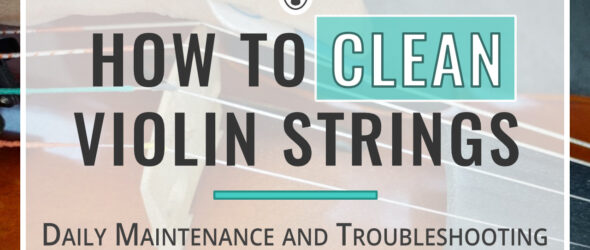
A helpful guide that teaches you how to clean violin strings.
Have you noticed thick, white dust on your violin strings? Have your strings sounded better? Cleaning strings is an important part of regular violin maintenance, and today I’ll teach you all about it!
Why do we want to clean our strings?
Clean strings resonate easier and have a more direct sound. If you’ve been playing with dirty strings full of rosin, you’ll hear a noticeable difference in the sound of your violin after just a little cleaning!
Caked-on rosin can also feel sticky on the strings, and if rosin is stuck to the wood underneath the strings, it can eat away at the violin varnish, leaving you with a high price tag for repairs. Cleaning violin strings regularly will help avoid many problems, and will keep your instrument in top playing shape!
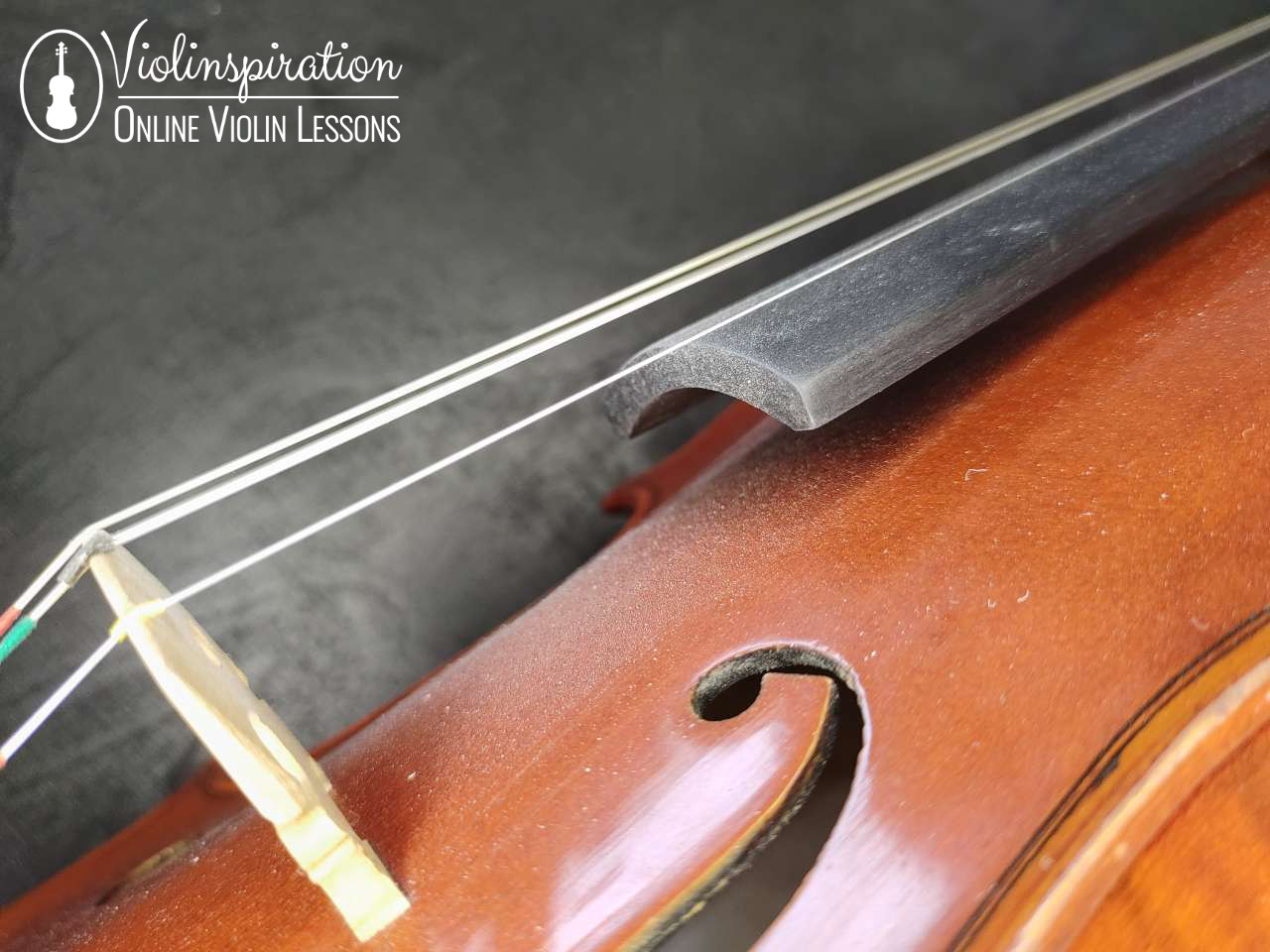
A Step-by-Step Guide to Clean Your Violin Strings
Before you get started cleaning your strings, keep in mind that violins are made of wood, and are delicate. If you have an antique violin or a very expensive instrument, take extra care, and bring it in to a professional for regular maintenance.
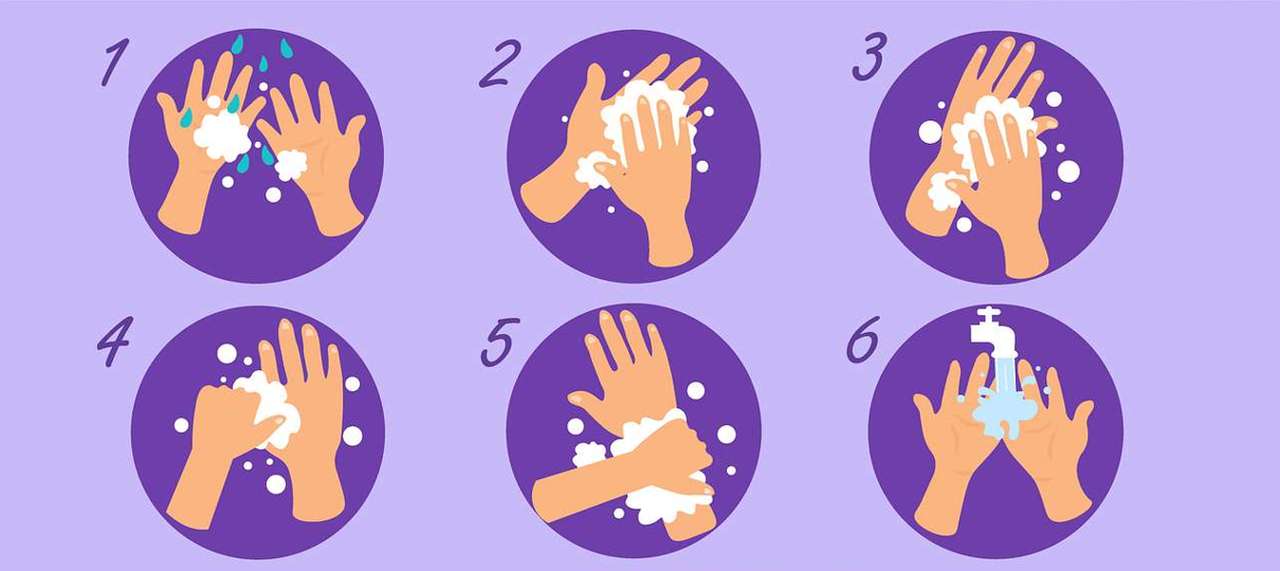
Step 1: Wash Your Hands
Make sure your hands are clean before approaching your violin, even if it’s just to play. The natural oils and dirt on our hands can wear down the varnish of the violin, and can also react with excess rosin dust on the instrument.
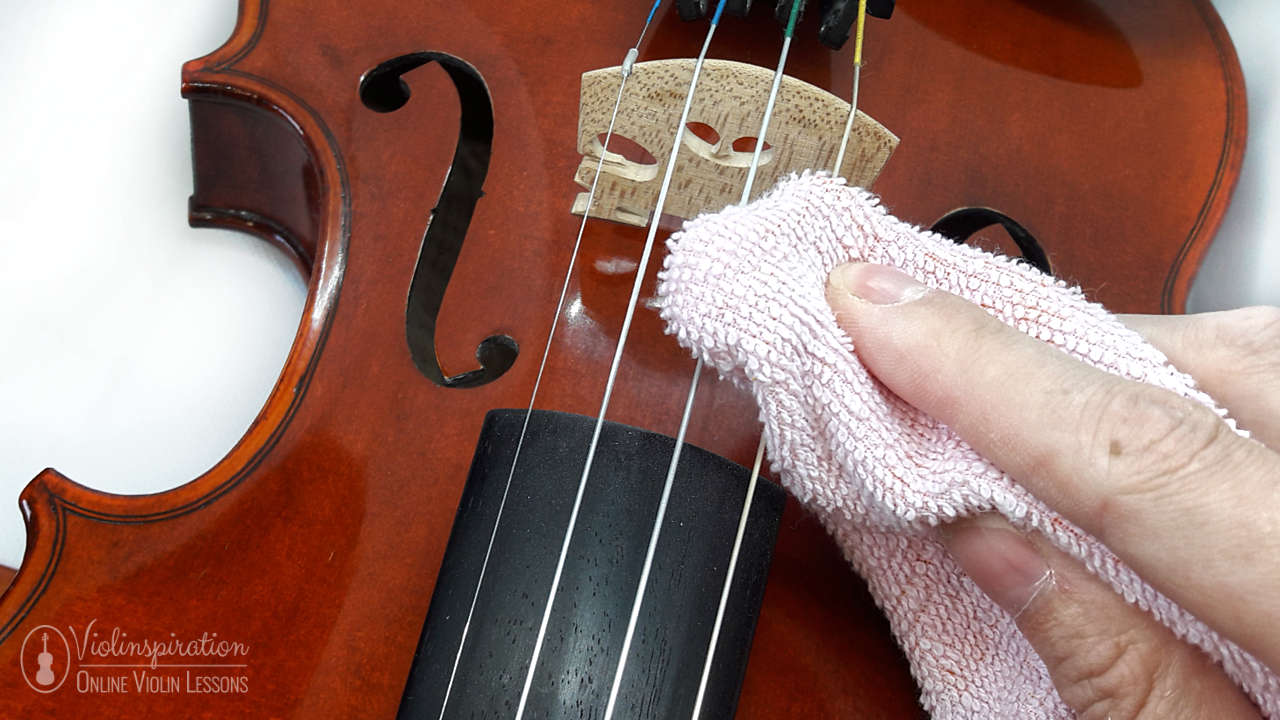
Step 2: Wipe down the strings
First, gently wipe down the entire length of each violin string with a dry microfiber cloth. You’ll also want to wipe down the body of the instrument underneath the strings, and I also like to shimmy the microfiber cloth between the fingerboard and the strings to clean the rosin built up there.
If you wipe the strings with a clean cloth at the end of each playing day, you’ll cut down on rosin buildup, and won’t need to do much more to keep the strings and instrument clean. That’s why a duster cloth is on my list of the most essential violin accessories!
When cleaning strings with a cloth, I start from top to bottom: first the strings themselves, then the fingerboard, then finally the body of the instrument. As you clean the strings, rosin will fall onto the fingerboard and the body. I’ve found that working from top to bottom is the most efficient method.
If cleaning with a dry cloth removes all the rosin, you can stop here! If your strings are still dirty, continue to the next step.
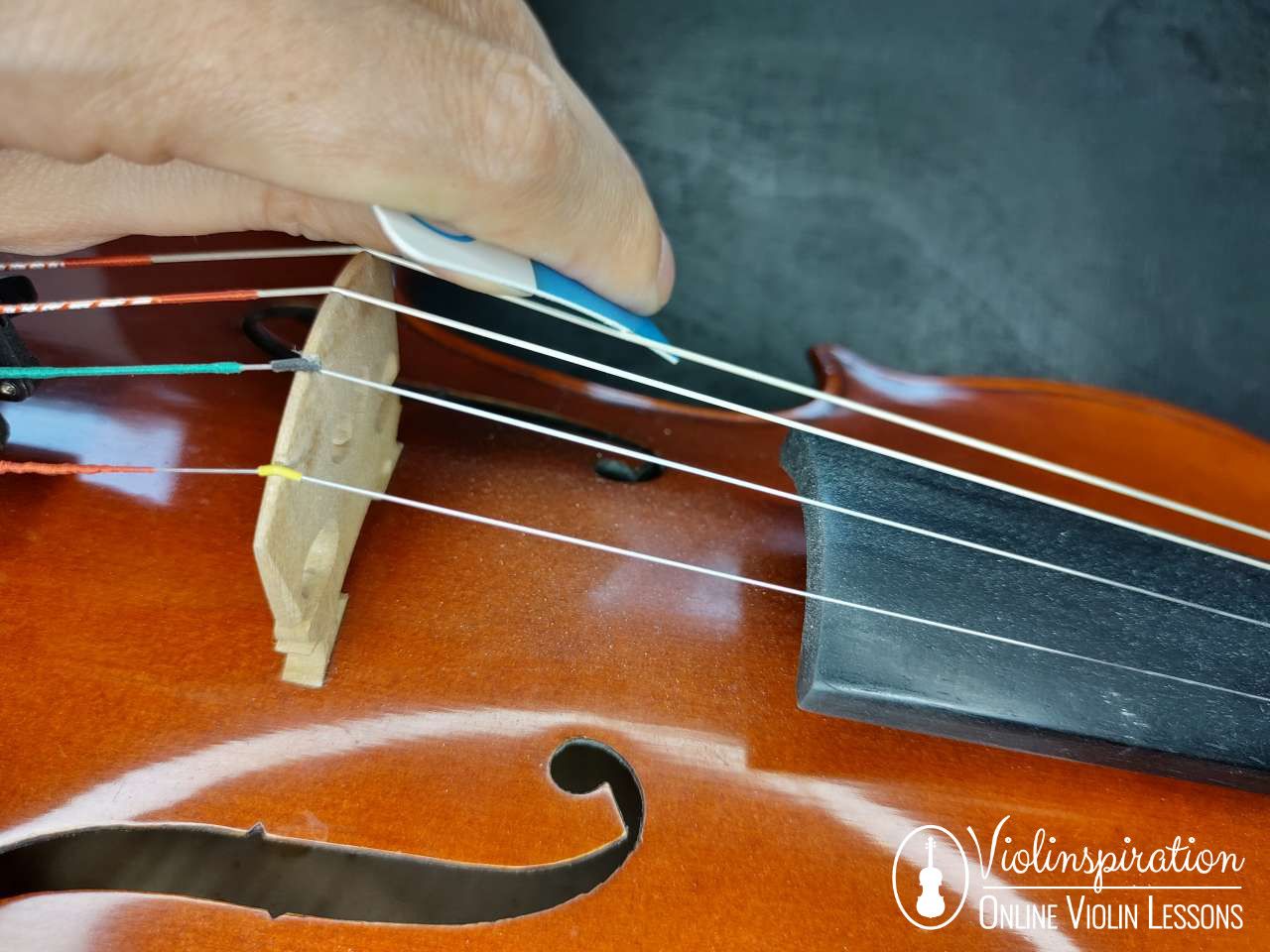
Step 3: Try a Credit Card
If cleaning with a cloth doesn’t remove all buildup, some musicians move to something more abrasive, like steel wool. I recommend against this method because steel wool can break down the winding of the string.
Instead, try gently scraping the string down with a plastic card, like an expired credit card or used gift card. You want something plastic, not metal. Scraping the string with an object like this is abrasive enough to remove rosin, but not enough to break down the string itself.
After you’ve scraped the string down, wipe it again with your microfiber cloth to remove the dust you’ve released.
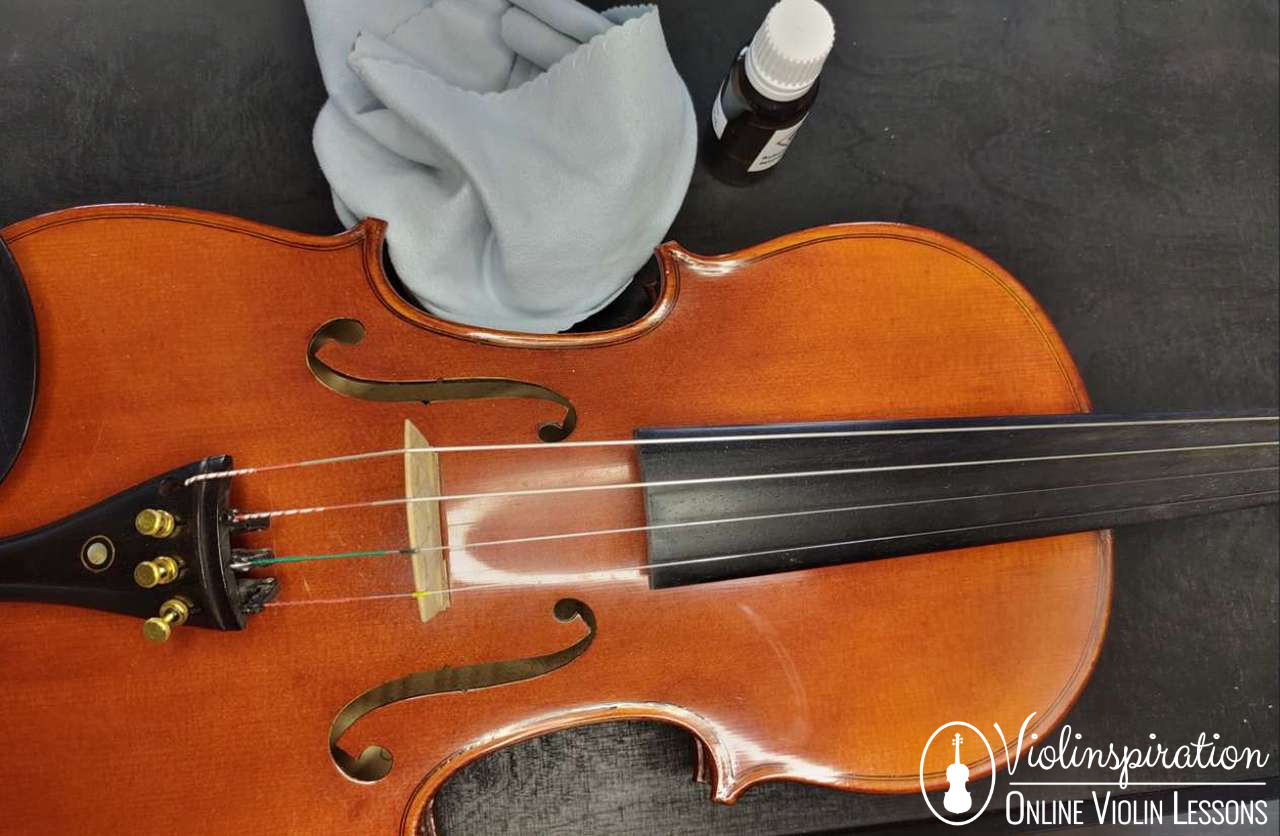
Step 4: Use Violin Cleaning Products
If your strings are still dirty or you don’t have a plastic card, try using a cleaning product specifically designed for the violin.
It’s very important to only use products made for string instruments on your violin. Different chemicals and liquid solvents can react badly with the wood and varnish of the violin, leaving you with a damaged instrument and high costs to fix it.
Please avoid using rubbing alcohol, pure alcohol, and any other chemical not formulated for string instruments on your violin. Some musicians do clean their strings with a tiny bit of alcohol on a cloth, and turn their violin upside down to avoid getting it on the wood. However, this is very risky, and many people have ruined their violin’s varnish by doing this. I say, avoid using chemicals at all costs!
To clean your strings, I recommend trying Old Master String Cleaner, Nature Works String Cleaner, or Petz Rosin Remover. These products are generally safe to use on all parts of the violin, including the strings and the body. These cleaning solutions will remove rosin, dirt, and oils, and also leave the finish shiny.
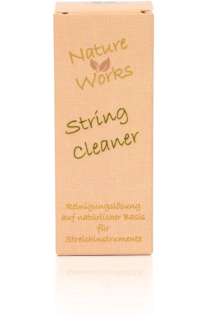
Nature works string cleaner
Support us for more FREE content No extra costs for you Recommended by Violinists
Troubleshooting
I’m noticing excessive rosin build-up every time I play
If you’re finding a lot of built-up rosin on the strings often, you may be using more rosin than you actually need. Try using rosin often, but only a sparing amount each time. If you notice clouds of rosin billowing up when you play, you’ve used too much.
If you find there’s too much rosin on the bow, loosen the hair, take a clean toothbrush, and run it through the bow hair. Tighten the bow, try playing again, and see if it feels any better. Repeat if necessary.
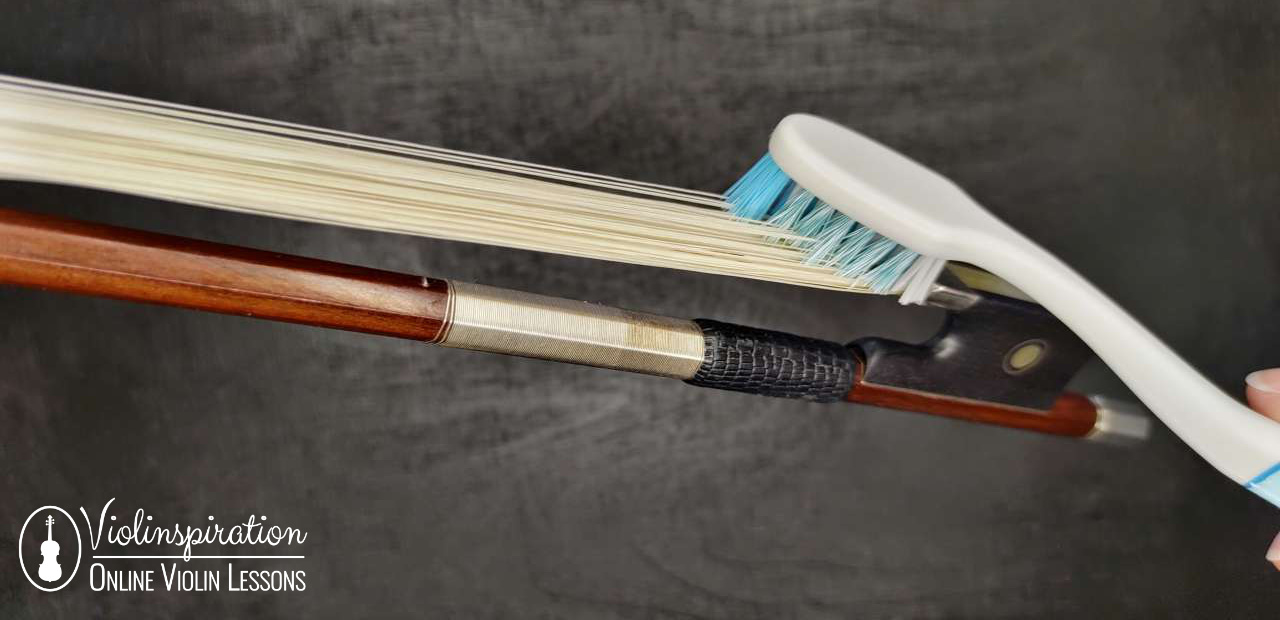
Some excess rosin and dust on the strings and by the bridge are normal, but finding a deep coating of rosin on your instrument after every practice session is extreme. Go through the steps above to remove the extra rosin from your strings, and then try using less rosin on your bow from now on.
My strings aren’t sounding as good as they used to
While cleaning the strings on your violin regularly will help extend their lifespan, strings do wear out over time. Depending on how long you’ve been playing on this set of strings in particular, and how dirty they’ve gotten, you may want to consider changing your strings. See if there are signs that your strings are worn out, and if so, you can follow my step-by-step guide to changing your strings.
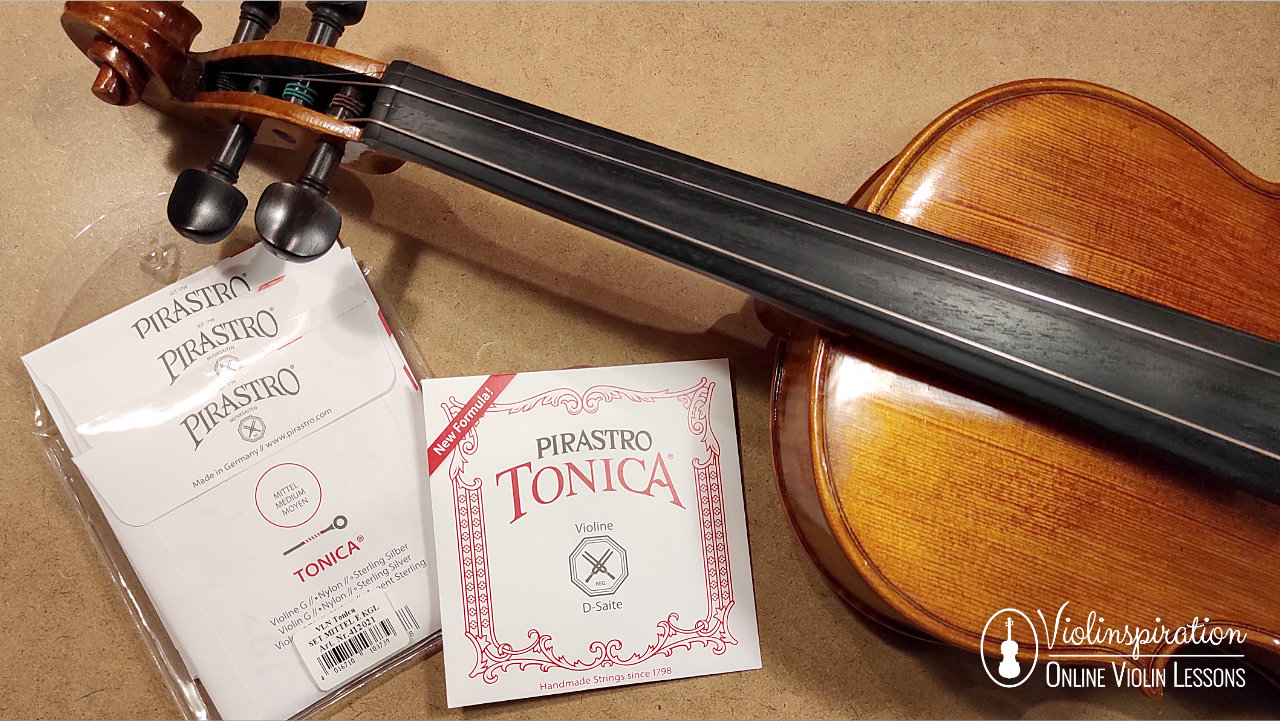
Once you have new strings on your violin, try to clean them often using the tips I’ve shared in this article to keep them performing at their best! Strings that are cleaned regularly will last longer than dirty strings.
Frequently Asked Questions
Can I clean violin strings with water?
No, please avoid putting water near your violin. Violins are made of wood, and water will warp and rot wood quickly. Rosin does not dissolve in water, so using a wet cloth won’t help.
It’s best to just gently rub the string down with a dry microfiber cloth. This should be about all you need to clean up rosin residue. If that isn’t enough in your case, try a product specifically made for the violin, like The Old Master.
Why are my violin strings sticky?
If your violin strings feel sticky, there’s probably rosin built up on the strings. Rosin is dusty in dry environments but becomes sticky in high humidity and/or heat. If the string is sticky close to the bridge and rosin dust has built up over a long length of time, it’s probably melted a little and adhered to the strings.
I’d recommend starting by wiping the strings with a dry cloth, and if it still feels sticky, try a more intense method, like scraping the string down with a plastic credit card with gentle pressure, or using rosin remover. Then, wipe down the string with a dry cloth once more, and the string should feel like new!
If your string feels sticky over the fingerboard area where your left hand plays, it could either be rosin or build-up from playing with sticky hands. Clean the violin string with a dry cloth, and please wash your hands before playing!
Can you use alcohol wipes on strings?

Never use alcohol on the body of the violin! It’ll quickly erode both the varnish and the wood stain. Even trying to clean just the strings with alcohol can create a disaster if you spill the alcohol, or accidentally touch the alcohol cloth to the body of the instrument.
It’s best to just avoid it entirely by cleaning off the strings daily with a dry cloth. That daily maintenance will avoid having to do anything drastic!
How can I clean my dirty microfiber cloth?
After a while, you’ll notice sticky rosin residue on the cloth you clean violin strings with. You’ll want to wash the cloth once the rosin is noticeable since using a dirty cloth is counter-productive. It’s fine to wash it with other cleaning rags.
Beware that rosin is very hard to get out of fabric. I once stepped on a chunk of rosin in my socks—the rosin never came out no matter how many times I washed it! But if your cloth has rosin dust, rather than rosin chunks on it, it should get relatively clean in the wash.
I wouldn’t wash the cloth with clothing, in case rosin residue gets transferred onto the other items in the load.
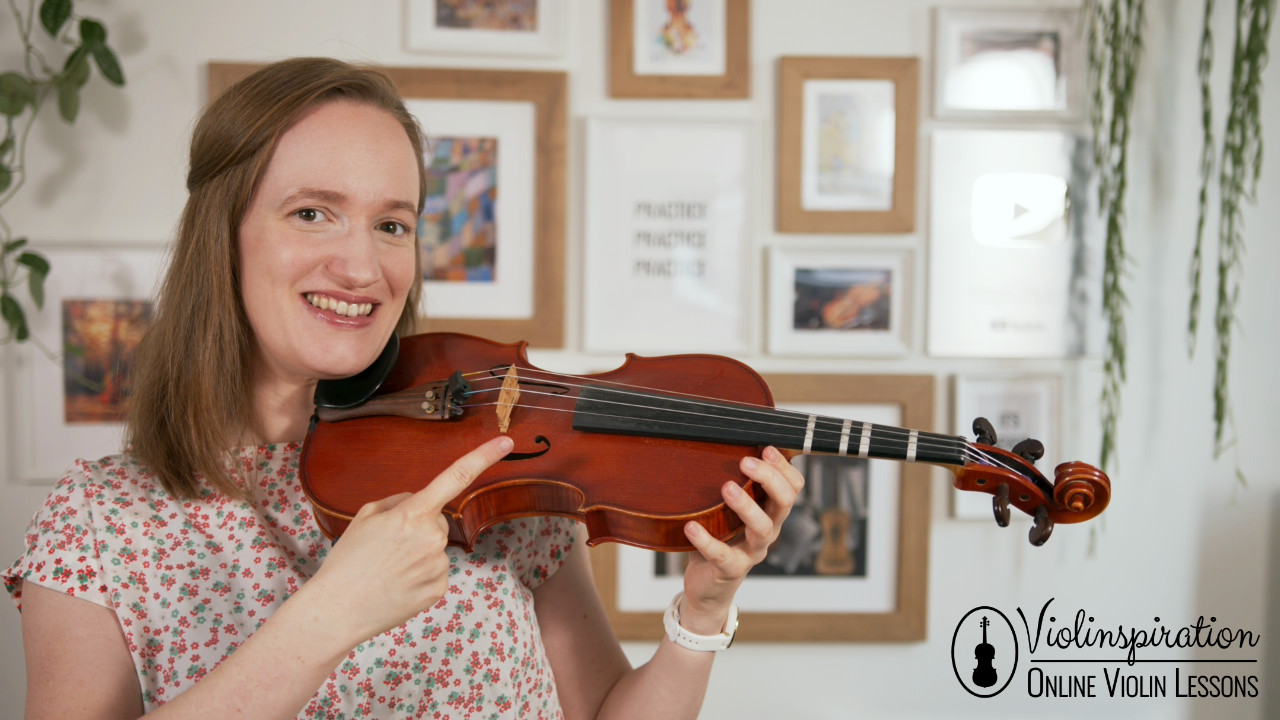
Learn More About Violin Care
Keeping your violin strings clean is an important aspect of violin maintenance. Be careful while using any cleaning products to protect the violin varnish. With proper care, your strings can sound great and last longer than if you leave them dirty.
For more information on keeping your violin clean, read my full guide on violin maintenance. Or, learn more details about violin strings here!























